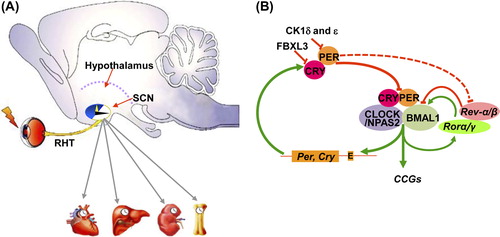Figures & data
Table I. Circadian genes in human diseases.
Table II. Circadian gene mutant mouse models.

